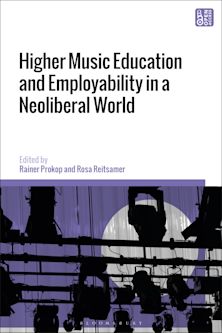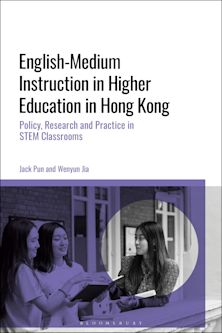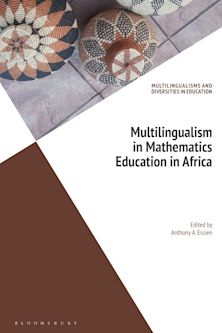Indigenous Novels, Indigenized Worlds
Exploring the Indigenization of Fictional Worlds
Indigenous Novels, Indigenized Worlds
Exploring the Indigenization of Fictional Worlds
Description
The fictional worlds created by many contemporary American and Canadian Indigenous novelists for young people provide unique access to the lived experiences of Indigenous people, past, present, and future and the often inaccessible worlds they inhabit. Readers age 10-16 will gain many insights about Indigenous people and themselves—Indigenous and non-Indigenous readers alike—through sustained immersion in fictional worlds where Indigenous people are foregrounded, active, autonomous, respected, and valued.
Table of Contents
Prefatory Note About In-Text Citations and References
Chapter 1 Indigenous Novels, Indigenized Worlds
Indigenous Novels, Indigenized Worlds
Indigenous Authors, Indigenous Novels, and Narrative Genre
Book Organization and Chapter Overviews
Indigenized Fictional Worlds: Books 1 and 2
References
Chapter 2 Indigenous Novels and Novelists
Chapter Overview
Selected Novels
Showcased Novelists
Methodology: the Identification and Grouping of Indigenizing Features
References
Chapter 3 Group A: Time, History, Ancestry
Chapter Overview
1. Time
2. Tribal history
3. Ancestry
Endnotes
Chapter 4 Group B: Cultural (Religious) Beliefs
Chapter Overview
4. Religious Beliefs and Practices
Set 4.1 Central Religious Beliefs
Set 4.2 Sacred Religious Practices and Objects
Endnotes
References
Chapter 5 Group B: Cultural Values And Events
Chapter Overview
5. Cultural Values
6. Cultural Events
Set 6.1 Traditional Games, Dancing, and Songs
Set 6.2 Family-based Feasts
Set 6.3 Festivals and Special Community Events
Set 6.4 Ceremonies
Endnotes
References
Chapter 6 Group B: Cultural Traditions
Chapter Overview
7. Cultural Traditions
Set 7.1 Traditional Knowledge, Skills, and Roles
Set 7.2 Subsistence Strategies
Set 7.3 Traditional Modes of Travel and Conveyance
Set 7.4 Traditional Houses and Shelters
Set 7.5 Traditional Craftmanship and Repairs
Set 7.6 Traditional Implements and Materials
Set 7.7 Traditional Foods, Drinks, and Medicines
Endnotes
Chapter 7 Group C: Language Use, Stories, and Storytelling
Chapter Overview
8. Language Use, Storytelling, and Stories
Set 8.1 Language Use
Set 8.2 Storytelling, Stories, and Writing
Endnotes
References
Chapter 8 Group C: Family Life and Kinship
Chapter Overview
9. Family Life and Kinship
Set 9.1 Family Life
Set 9.2 Childbirth and Childhood Play
Set 9.3 Coming of Age, Courtship, and Marriage
Set 9.4 Kinship
References
Chapter 9 Group D: Destruction and Restoration
Chapter Overview
10. Divestments, Denigration, Subjugation, Disease
Set 10.1 Forced Appropriation, Moves, Separations, Sterilization, and Deprivation
Set 10.2 Cultural Denigration, Disdain, and Identity Concealment
Set 10.3 Harassment, Subjugation, and Brutality
Set 10.4 Disease
11. Sovereignty, Defense, and Leadership
Set 11.1 Sovereignty and Defense
Set 11.2 Leadership
12. Recovery and Restoration
Concluding Thoughts: Indigenous Novels, Indigenized Worlds
Endnotes
References
Appendix A: An Inventory of Features For Two Novels
Group A: Time, History, Ancestry
Group B: Cultural Beliefs, Values, Events, Traditions
Group C: Language, Storytelling, Family Life, Kinship
Group D: Destruction & Restoration
Appendix B: An Inventory of Features For Two Novels
Group A: Time, History, Ancestry
Group B: Cultural Beliefs, Values, Events, Traditions
Group C: Language, Storytelling, Family Life, Kinship
Group D: Destruction & Restoration
About the Author
Product details
| Published | Aug 16 2023 |
|---|---|
| Format | Ebook (PDF) |
| Edition | 1st |
| Extent | 1 |
| ISBN | 9798216284468 |
| Imprint | Rowman & Littlefield Publishers |
| Illustrations | 11 tables |
| Publisher | Bloomsbury Publishing |
Reviews

ONLINE RESOURCES
Bloomsbury Collections
This book is available on Bloomsbury Collections where your library has access.


































